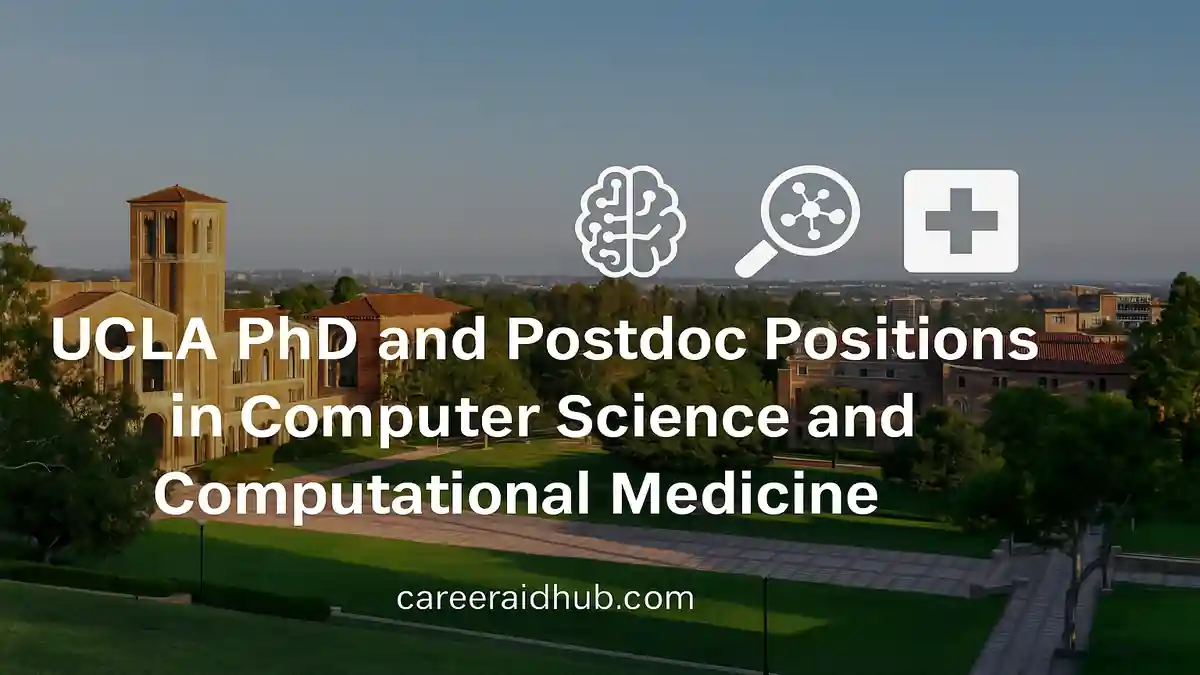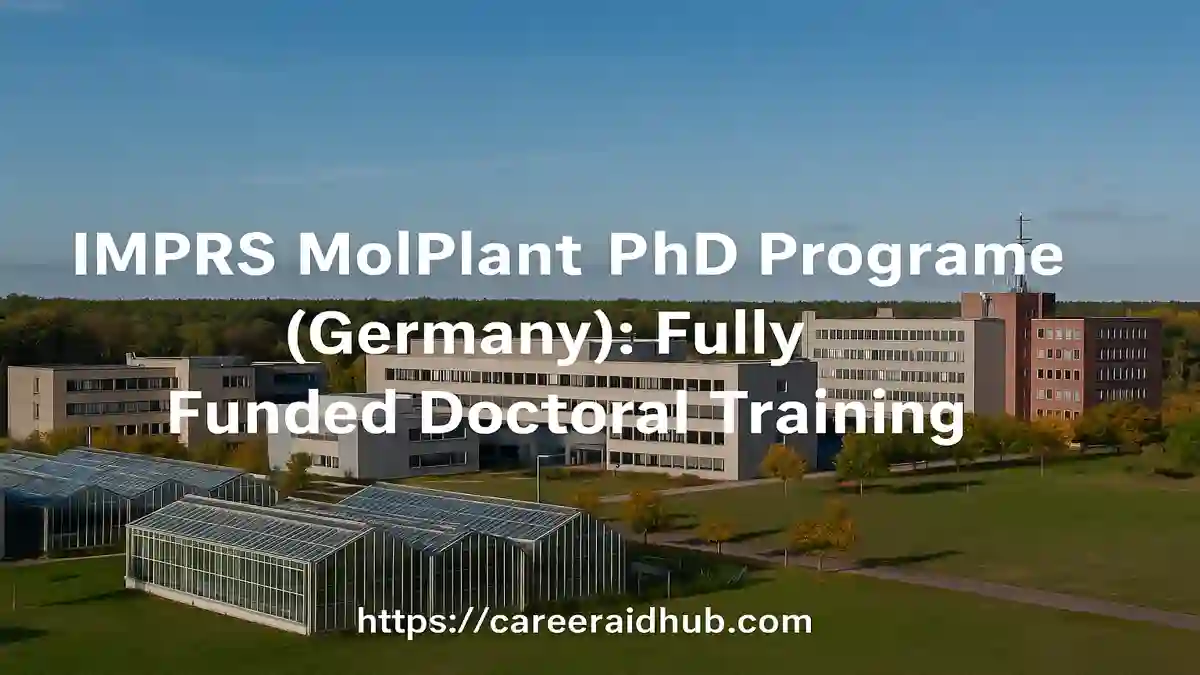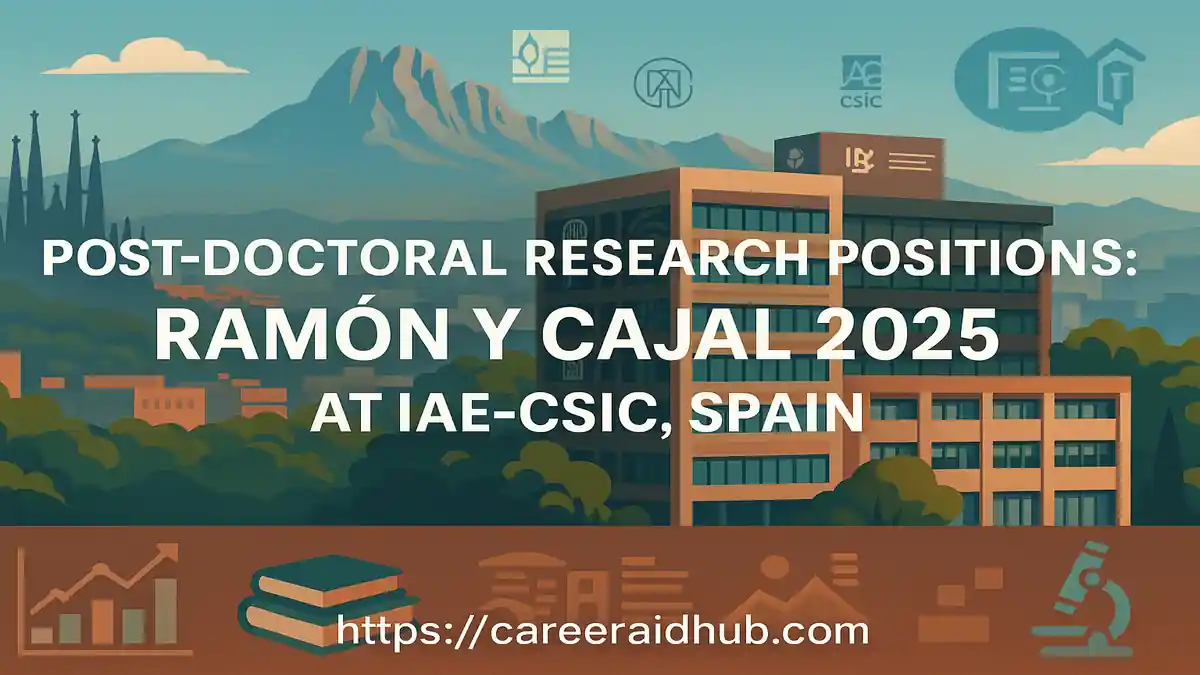Introduction
The European Institute of Innovation and Technology (EIT) supports a portfolio of fully funded PhD projects at the University of Oxford. Within economics, the program features rigorously defined topics that blend frontier methods with policy relevance and real-world impact—ranging from AI and robotics to healthy ageing and macroeconomic prevention models. For the latest official details on projects and cycles, consult the EIT Scholars Projects page (see: https://www.eit.org/scholars/scholars-projects).
Pursue a fully funded doctorate through EIT PhD Projects at Oxford. This guide explains economics-focused topics, funding, eligibility, and smart application tactics. Learn how AI, longevity, and prevention economics shape policy-relevant research—and build a compelling proposal that aligns with supervisors and selection standards for a truly competitive submission.
Program Snapshot
|
Feature |
Details |
|
Program Name |
EIT PhD Projects (Economics Focus at the University of Oxford) |
|
Host Country |
|
|
Funded By |
Ellison Institute of Technology (EIT) |
|
Duration |
Typically 3–4 years of full-time doctoral study |
|
Study Mode |
Full-time (on-campus at Oxford) |
|
Eligibility |
Strong academic background in economics or closely related fields; quantitative training; research fit with a listed project |
|
Financial Support |
Full funding (tuition + living support) via EIT Graduate Scholarships; access to Oxford research ecosystem |
|
Fields of Study |
Economics topics listed below; interdisciplinary intersections with AI, biology, public health, and policy |
|
Deadline |
Applications generally open in September; next cycle expected September — we will update soon |
|
Official Website |
Key Areas of EIT PhD Projects in Economics
-
Economic Consequences of AI and Robotics
This project evaluates how automation, AI, and robotics influence productivity, wages, and employment composition. Candidates investigate heterogeneous impacts across sectors and skill groups, identifying channels—task reallocation, capital deepening, and spillovers—that drive growth or displacement. In addition, students examine policy responses that can smooth transitions, such as reskilling incentives, targeted R&D support, and safety-net reforms that preserve innovation while protecting vulnerable workers.
What to emphasize in your proposal:
Demonstrate technical depth (e.g., causal
-
Measuring Health and Ageing: From Biology to Economics
This topic integrates biomarkers and biological ageing metrics with economic models to quantify how health trajectories shape lifetime earnings, productivity, and savings. Scholars may translate measures such as epigenetic clocks or inflammation markers into econometric inputs, enabling estimates of labour supply changes, medical expenditure risk, and intergenerational effects.
How to strengthen fit:
Clarify the mapping from biological indicators to economic outcomes. For example, propose a framework that links health stocks to retirement timing or insurance design. Discuss data integration—survey microdata, clinical cohorts, or administrative health records—and define ethical safeguards and privacy protocols. Avoid jargon-heavy prose; instead, explain each concept plainly while keeping technical accuracy.
-
The Macroeconomics of Longevity
Rising longevity alters aggregate savings, fiscal balances, pension liabilities, and healthcare demand. This project asks students to model demographic transitions and quantify macro stabilization options. You might simulate alternative pension indexation rules, retirement ages, or health investment policies to evaluate sustainability and distributional consequences.
Analytical angle to consider:
Blend overlapping-generations frameworks with realistic life-cycle risks—health shocks, productivity paths,
-
Micro to Macro: Causal Micro Evidence for Macro Prevention Models
Preventive policies—vaccination, screening, or early-life interventions—often generate long-run macro benefits that are hard to observe directly. This project builds causal micro evidence (e.g., quasi-experiments, randomized programs) and scales it into macro models to estimate GDP, welfare, and fiscal effects.
What reviewers look for:
A credible micro identification strategy, a transparent mapping to macro sufficient statistics or structural parameters, and replicable code. Explain how you will handle external validity and uncertainty—scenario analysis, sensitivity checks, and pre-registered analysis plans signal rigor and maturity.
-
Structural Macroeconomic Models of Healthy Ageing
This area invites structural models where health capital is a state variable shaping productivity, labour supply, and public budgets. Candidates design estimation strategies that combine micro evidence with discipline from economic theory, then evaluate policy packages—prevention, workplace adaptation, or long-term care reform.
Proposal tip:
Outline the trade-offs among model complexity, identifiability, and computation. Show that you can estimate key elasticities from data (not just assume them) and that your model can be interrogated with counterfactuals that policymakers understand.
Why Choose an EIT PhD Project in
Economics?
Fully Funded Doctoral Program
EIT PhD Projects are paired with EIT Graduate Scholarships, providing full tuition coverage and living support. Scholars also benefit from the University of Oxford’s research infrastructure—libraries, datasets, workshops, and cross-department seminars—facilitating high-quality dissertations without financial distraction.
Focused on Global Challenges
Projects align with EIT’s “humane endeavours,” addressing AI transitions, healthy ageing, prevention economics, and macro resilience. The goal is not just publication but policy relevance—translating precise empirical findings into actionable recommendations.
Interdisciplinary Collaboration
Economics students engage with biologists, clinicians, computer scientists, and public policy scholars. This synthesis allows novel identification strategies, richer measurement, and more credible mechanisms—features that often distinguish top job-market papers.
Academic Excellence and Distinction
Oxford’s environment rewards depth and clarity. Expect close supervision, research colloquia, and exposure to visiting scholars. Graduates typically build strong placement portfolios with job-market papers, field presentations, and code/data repositories.
Application Essentials for EIT PhD Projects
Eligibility Criteria
Applicants should display:
-
- A strong quantitative core (e.g., econometrics, programming, math for economists).
- Research alignment with a listed EIT project in economics.
- Clear communication skills and ethical awareness around data use.
- Compliance with Oxford doctoral entry standards (academic track record and language proficiency).
Next cycle expectation: Applications usually open in September; we will update soon when the official window is announced.
Selection Standards
Reviewers assess:
-
- Alignment: Your proposal must fit the chosen topic and outline feasible contributions.
- Academic excellence: Transcripts, letters, and any research outputs.
- Innovation and rigor: Credible identification, robust modeling, and replicability.
- Collaboration: Evidence you can work across disciplines and communicate with stakeholders.
Expert insight: Proposals that specify data access pathways, version-controlled code plans, and a transparent pre-analysis outline tend to stand out.
How to Apply
-
- Select a project whose methods and policy aims match your background.
- Draft a focused proposal (2–4 pages) emphasizing contribution, data, and methods.
- Assemble materials: CV, transcripts, references, writing sample(s).
- Submit within the cycle: Calls typically begin in September; we will update soon on specific milestones.
- Parallel steps: Track Oxford’s departmental requirements to ensure a complete and timely dossier.
Review Schedule & Update Reminder
|
Section |
When to Review |
|
Application timelines |
Every August–September (pre-cycle) |
|
Project descriptions |
Annually after new topics post |
|
Funding language |
After scholarship announcements |
|
Methodology links & examples |
Mid-year to refresh code and resources |
Actionable Suggestions for Prospective Applicants
-
- Identify Your Fit:Match your skills—causal inference, structural modeling, or computational economics—to the topic where you can deliver distinct value.
- Draft a Focused Proposal:Define research questions, data, identification, expected contributions, and policy implications. Keep prose precise; use figures or flowcharts sparingly for clarity.
- Contact Potential Supervisors:Send a concise email (200–300 words) with your CV and a one-page précis. Ask targeted questions about feasibility and data instead of generic requests.
- Apply Early:Early submissions reduce risk and allow time to resolve document issues. Build a short timeline with buffers for references and test scores.
- Prepare for Oxford Admissions:Align your dossier with departmental norms: coursework, math background, and writing samples that demonstrate analytical maturity.
Summary
EIT PhD Projects in economics at Oxford offer a rare combination of full funding, interdisciplinary mentorship, and policy-relevant research. Whether you study AI’s labour effects, the biology-economics interface, or healthy ageing macroeconomics, the program supports ambitious scholars who value rigor and real-world impact. Start preparing now so your application is ready when the next cycle opens in September—updates coming soon.
Conclusion
Joining the EIT PhD Projects portfolio at Oxford positions you to produce original, policy-salient economics research with world-class supervision and resources.
References
Frequently Asked Questions (FAQs)
EIT PhD Projects are fully funded doctoral programs at Oxford, focusing on innovative, policy-relevant research in economics and other interdisciplinary fields.
Yes, they cover tuition, research support, and living expenses through the EIT Graduate Scholarship for the entire duration of the program.
Applicants need a strong academic background in economics, quantitative analysis skills, and alignment with one of the listed research projects.
The program typically lasts three to four years of full-time, research-intensive doctoral study at the University of Oxford.
Applications usually open in September. Always check the official website for updates on the upcoming cycle dates.
Topics include AI and robotics, health and ageing, macroeconomic modeling, prevention economics, and structural models of healthy ageing.
The projects are highly competitive, selecting candidates with exceptional academic performance, research experience, and innovative, well-structured proposals.
Focus on a clear, data-driven research proposal, demonstrate methodological expertise, and show alignment with project goals and supervisors’ research.
Yes, the program welcomes qualified applicants worldwide, promoting diversity and interdisciplinary collaboration in economics and related fields.
Scholars gain financial support, access to Oxford’s resources, mentorship from expert faculty, and opportunities for interdisciplinary research collaborations.
Premium Mentorship for a Stronger Application
- Premium Mentorship: personalised 1:1 guidance for this and similar opportunities
- In-depth review of your CV, academic profile, and key statements
- Aligned with international selection criteria so your profile matches what panels expect
- Stronger, more compelling narrative for highly competitive calls
- Step-by-step support from opportunity mapping to final submission (fee-based)










